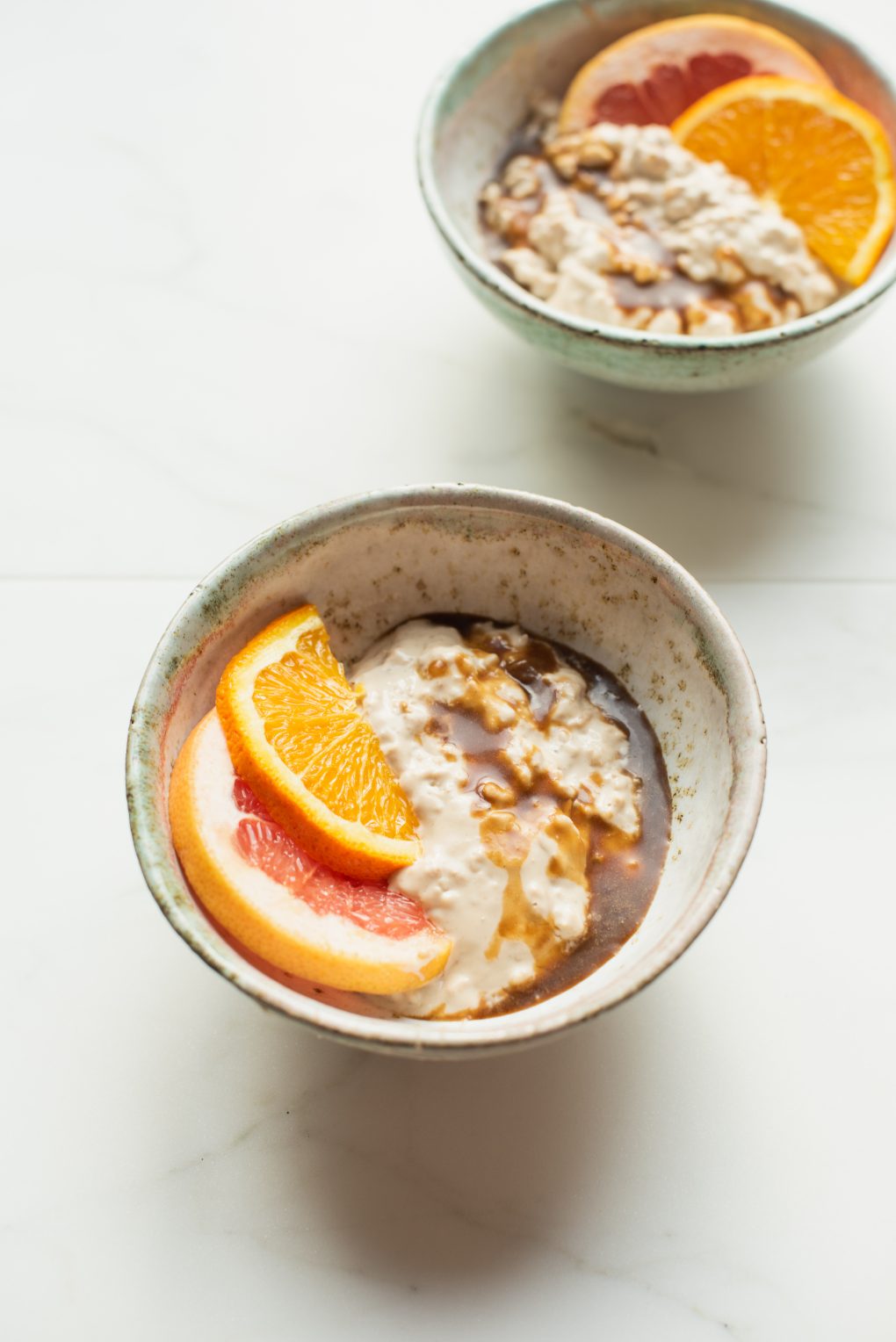
How to Replace White Sugar?
During the POWER CHALLENGE we’re giving up white sugar, wheat and alcohol. Thanks to the growing awareness of consumers, sugar-free products are increasingly available in stores. Producers are well aware that we read labels and check product ingredients more and more often. It really encourages people to keep working on building healthy habits, so we keep going. That is why today I will answer the question of what the best substitutes for refined sugar are. After all, I cannot imagine my life without sweets.
Coconut Sugar
It is obtained from coconut palm juice. It has a deep, brown color and an intense caramel scent. It is less sweet than white sugar, and when added to dishes, it gives them a unique, slight coconut flavor and pleasant aroma. Compared to white sugar, it is also richer in nutrients, including B vitamins and potassium as well as iron and calcium. Coconut sugar also has a lower glycemic index (IG = 35) than white sugar. It is a source of inulin, which supports the proper functioning of the digestive tract, supporting the growth of a healthy intestinal flora. Its advantages include low melting point and high burning temperature at the same time, which make it perfect for baking.
Xylitol
WHO describes it as a safe sweetener. It is a substance that resembles white sugar, but unlike white sugar, it has health-promoting properties. Xylitol is called birch sugar. It is a natural compound that occurs in the fibers of birch, corn, oats, plums and raspberries. It is usually obtained in China and Finland.
It has almost two times fewer calories than white or cane sugar. It has 75% less simple carbohydrates than white sugar. It has antibacterial, anti-cancer and anti-parasitic properties. It strengthens the immune system, maintains the proper level of glycemia in the blood, and regulates the functioning of the digestive system.
It should be introduced into the diet slowly, starting with small doses as bigger ones can cause negative effects, such as diarrhea, flatulence, vomiting, indigestion, stomach pains.

Erythritol
Also known as erythritol. It is produced by fermentation of glucose in which yeast is used. Its natural sources are seafood, pollen from flowers and fruit, such as melons, grapes, pears.
It is a natural sweetener with almost zero energy value. It is not metabolized by the body at all, so it is especially recommended for people who want to lose excess weight, as well as for diabetics.
Too much erythritol, just like in the case of xylitol, can cause bloating, diarrhea or other stomach ailments, so it is worth getting used to it starting with small doses. WHO confirms that erythritol is not harmful to health. In addition, it is characterized by a low glycemic index and is conducive to the prevention of diseases in the oral cavity, as it does not cause bacterial growth.
Honey
On average, 70-80% of honey are carbohydrates, most of which are simple sugars – fructose, glucose, sucrose. It contains many types of flavonoids and polyphenols, which have a strong antioxidant and health-promoting effect.
Acacia honey – used in the treatment of the digestive system, gastric and duodenal ulcers, as a digestive accelerator, in the treatment of diseases of the urinary tract and kidneys. It is sweet, sometimes almost bland, slowly crystallizing, white or cream in color, sometimes almost translucent, the lightest of all honeys.
Rapeseed honey – used in heart disease, inflammation of the upper respiratory tract, has detoxifying properties, accelerates wound healing and is gentle on the liver. It is characterized by a straw color and a sweet taste with a bitter note. It crystallizes quickly and becomes almost white and creamy.
Linden honey – helpful in the treatment of colds and flu, has diaphoretic, expectorant and calming properties, helps to fall asleep and balances blood pressure. In its liquid state, its color resembles amber. It has a slightly sharp, bitter taste.
Clover honey – it has a calming effect and is used to treat anemia. From white clover we get sweet white honey, from red clover we get darker and slightly more sour honey.
Raspberry honey – it is used in the treatment of anemia and atherosclerosis, has diaphoretic, antipyretic and antiseptic properties, it has a sour taste.
Buckwheat honey – rich in vitamins and minerals, helpful in the treatment of cardiovascular diseases, atherosclerosis and nervous disorders, accelerates wound healing. It has a characteristic, pungent taste and amber color, and becomes almost black when exposed to light.
Heather honey – it is effective in oral ailments (cheilitis), also used in inflammation of the urinary tract, kidney stones, enteritis, and diarrhea. In liquid form, it is amber in color, and when crystallized, it becomes orange. It has a sharp and bitter taste.
Flower honey – it is used to treat anemia, fatigue, pharyngitis, colds, allergies and to regulate pressure. The taste is very sweet and the color depends on the collected nectar, but most often golden, and light brown after crystallization.
Honeydew honey – it helps treat respiratory tract, it is used to produce expectorant syrups, has diuretic properties and helps in the secretion of bile. The least sweet of all honeys, it is characterized by a greenish color.
Phacelia honey – obtained from the flower nectar of a plant called blue phacelia (Latin Phacelia tanacetifolia benth). Its properties help in the treatment of cardiovascular diseases and atherosclerosis, as well as diseases of the digestive system.
As you can see, there are many ways to replace white sugar in the kitchen. You can be sure that you will not find it in my Foods by Ann and Super Menu products. The recipes in my Diet&Training by Ann application are similar, so if you are looking for ideas for healthy snacks and more, that’s where you can find them. I hope you are working with me in the POWER CHALLENGE and that you are changing your habits to healthier ones. But most importantly, I hope that you are already feeling better!
Bibliography:
- Boesten M., Daniëlle M.,Hartog G., Decock P., Bosscher D., Bonnema A. (2015). Health effects of erythritol. Nutrafoods. 14. 1-7. 10.1007/s13749-014-0067-5.
- Dąbkowski J., „Naturalne składniki suplementów diety”, Grembecka M. „Ksylitol – rola w diecie oraz profilaktyce i terapii chorób człowieka”, Food Forum (luty 2017).
- Samarghandian S, Farkhondeh T, Samini F. Honey and Health: A Review of Recent Clinical Research. Pharmacognosy Res. 2017 Apr-Jun;9(2):121-127. doi: 10.4103/0974-8490.204647. PMID: 28539734; PMCID: PMC5424551.










Comments No Comments
Join the discussion…